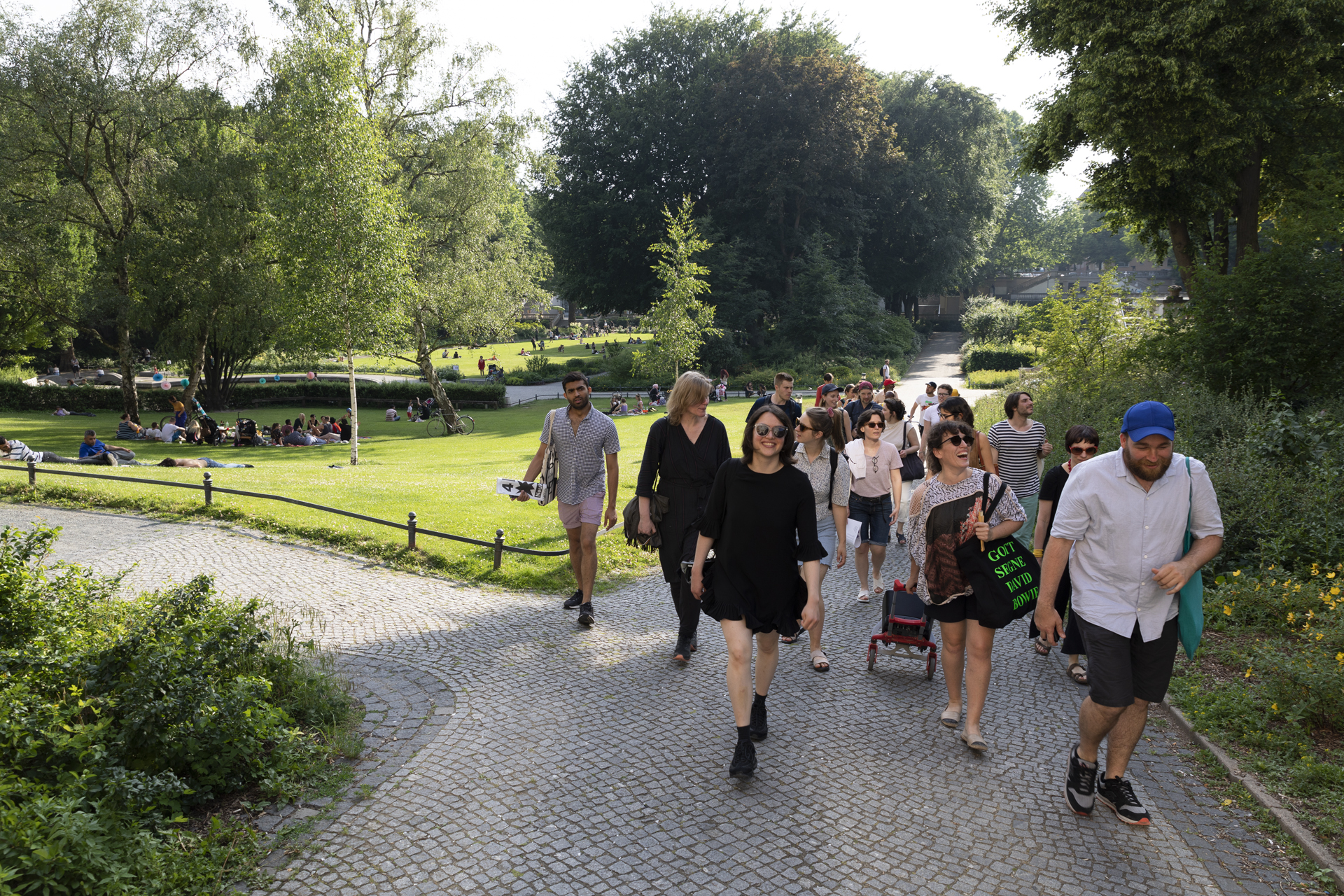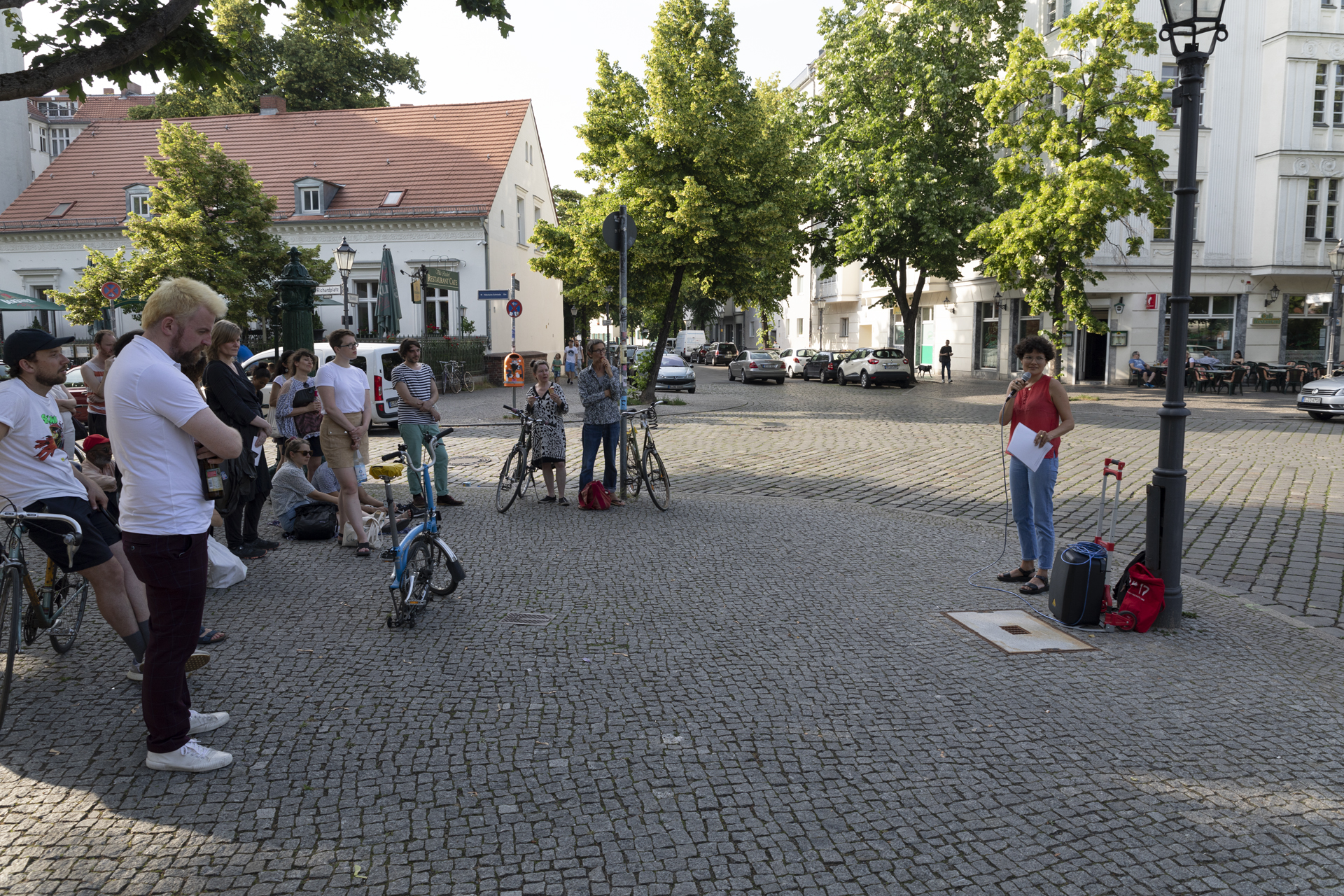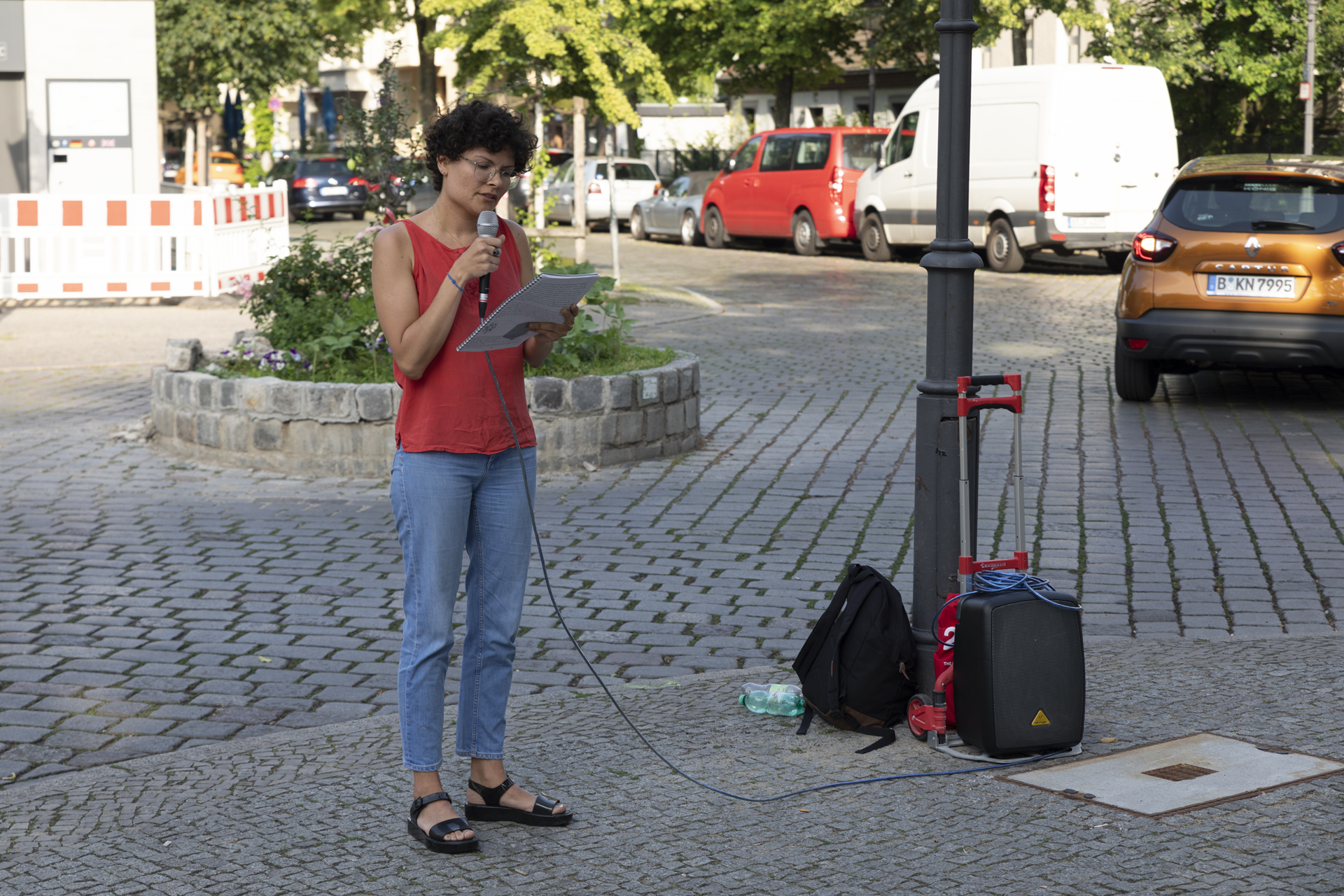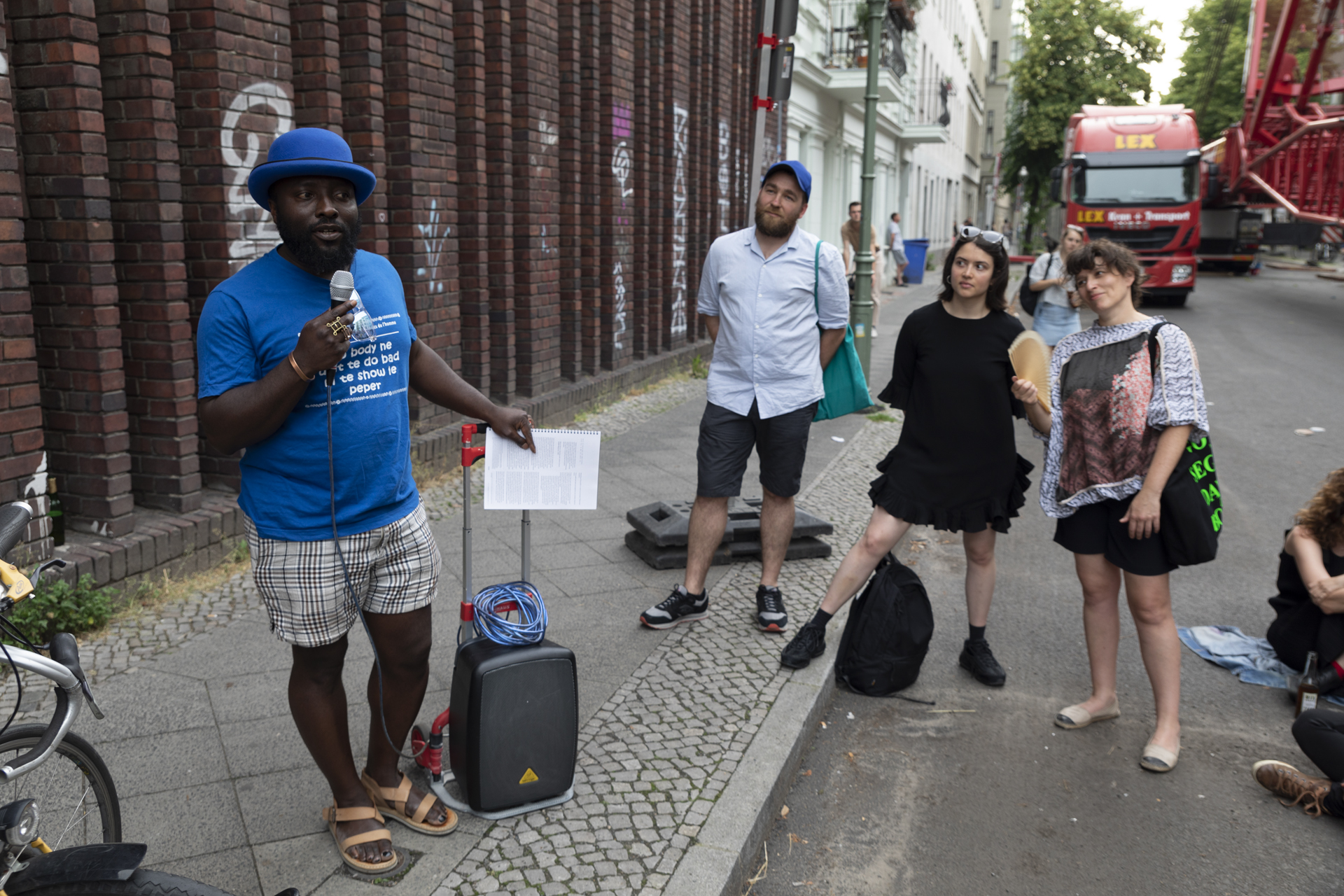SEVEN CROSSROADS
2019, A Berlin Walkshop Ramble
2019, A Berlin Walkshop Ramble
What matters is the rite.
1. Welcome to Xberg. Before we get going, walk 7 steps in any direction and stand still for a moment. We are in no hurry to get anywhere. Rambling is another way to experience a place. Start rambling, that is, avoid walking in straight lines. What does it mean to be in this place? What does it mean to be at a crossroads?
2. Now look around and choose a direction. Immediately start walking, slowly, in any direction away from your point of departure. No matter if you have been here before, no matter where you come from. Walk around in silence for a while and observe how your body moves, aimless. How much does your spine bend? Hips: do they sway? Arms: do they swing? If you find yourself in a familiar space, opt for lesser known streets. It might be hard but try to get lost. You can walk in circles, repeat paths. The important thing now is to remain in motion. Have you ever thought about how your thinking is affected by the fact that your body is at rest or moving? Are the thoughts that come to mind when you are sitting any different to those you have when standing? Where do you usually have more ideas: in the shower at home or in the alleyway, in the streets and subway stations?
3. Stop at the first crossroads you come to and ask Exu for right of way. Also known as Aluvaiá to the Bantu people or Legbá to the Fon people, the Latin-American syncretic god Exu is the inhabitant of the crossroads. To open the paths and begin work, leave an offering, a gift, an Ebó. Enchant the ground by giving it something to eat or drink.
4. “Crossroads are places of enchantment for all peoples”. Really? Let´s suppose so, just for a while. As such, they are places of mistrust, doubt and disorientation, and therefore expressive of powerful irrelevances. Crossroads become a necessary perspective in the attempt to cheat the death dished out by colonialism, death as disenchantment, brutal burden, and haunting. In the South Atlantic, the Christian cross was transformed into crossroads, the site of the crossings, passage. At the edges of modernity, crossroads are places of the refusal of the colonial project. Now, wait a minute. Hold the keys to your home while you observe what happens around here. Don’t move until something unexpected occurs.
5. How much time in your life have you spent looking at strangers in the street? Can you find silence on a street full of people? There are 2.4 million rats in Berlin, and who knows how many of them live in Xberg? Bathing at night on Paul-Linke-Ufer. Can you hear them? Now: If you have an audio device, listen to some blues music or a samba. If not, even better, just sing or whistle a song by heart. Come on, louder.
6. Crossroads might be the syncretic museums of all cultures dispossessed of their heritage. Cultures forced to migrate after being deterritorialized but insisting on practicing their rites on other equally contaminated, toxic and hungry soils. The crossroads are the immaterial vessels where diverse narratives and stories meet, collide and potentially exchange vital forces, updating themselves in the form of whispers, songs, offerings. Naja: Talk to the street. Choose – or let yourself be chosen – by a passerby. You might need to make an agreement with this person. Maybe it is an economic one.
7. Leave the crossroads once the work is done. Exit by turning down the first street on the left. Avoid ever walking through the same crossroads again. The first walkshop ramble experiment took place in the summer of 2018 in the anthropogenic region of the Harz, Germany, under the title ‘Twelve steps and a hole in the valley’. Commissioned by the University of Hildesheim, the walkshop was created by artist Barbara Marcel in collaboration with the geographer Andreas Döpke and aimed to bring together students of various disciplines in the historic, cultural landscape of the western Harz, to reflect on false dichotomies such as nature–culture and rural–urban. Through a combination of collective and individual walking experiments, the World Heritage Site was set up as a temporary and dynamic station for the collaborative decolonial imagining of past and future landscapes. As a further iteration of the Walkshop Ramble project, the piece printed here has a hybrid form, a mix of musical score, audio guide and whistling, inspired by the book The Enchanted Science of Macumbas (2018), by Brazilian macumbeiros Luiz Antonio Simas and Luiz Rufino. Responding to an invitation to contribute to the first issue of The Endotic Reader, Barbara Marcel proposes a new experiment of walkshop ramble, suggesting a reticulation of knowledges that although not so evident, also inhabit the city of Berlin.









